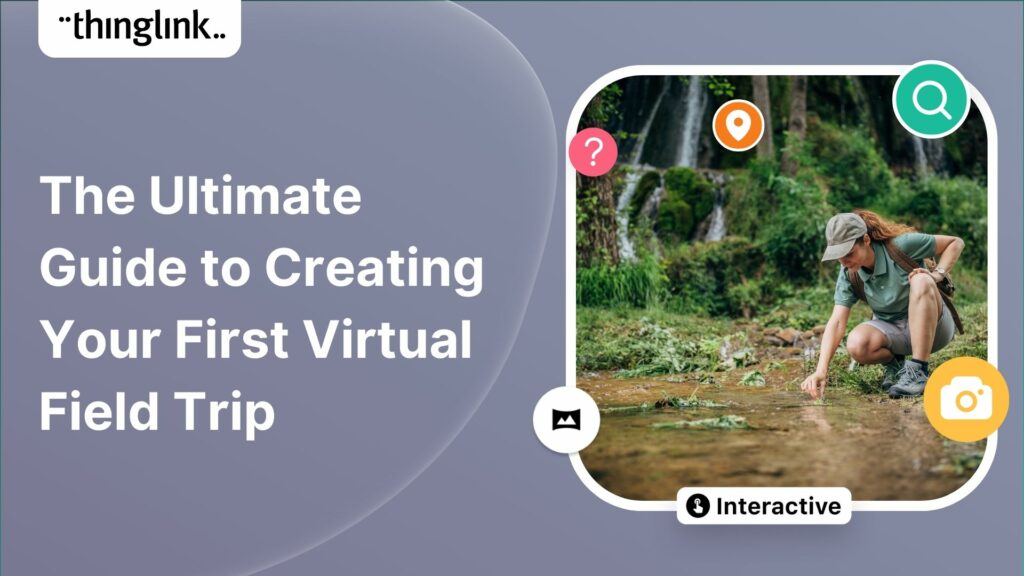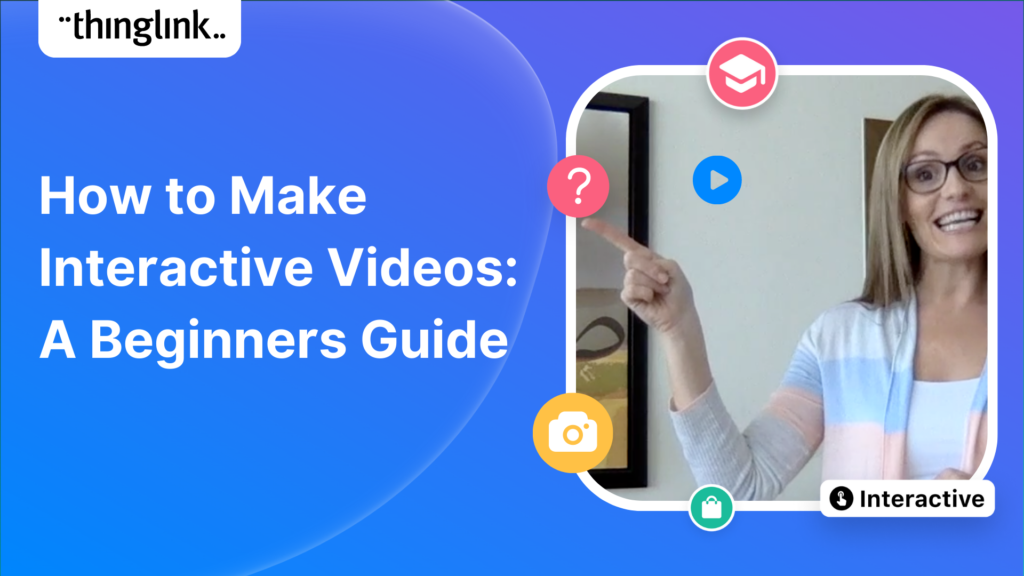Explainer Videos, Marketing
The Ultimate Guide to Creating Engaging Education Videos
The Ultimate Guide to Creating Engaging Education Videos
Unlock the secrets to captivating students with our ultimate guide to creating educational videos that will transform your teaching!
 Image courtesy of Christina Morillo via Pexels
Image courtesy of Christina Morillo via Pexels
Table of Contents
Education video production has become an increasingly important tool in the digital era. With the rise of online learning platforms and the widespread accessibility of video content, educators now have the opportunity to reach a global audience and enhance the learning experience for students. However, not all educational videos are created equal. In order to produce engaging and effective videos, it is crucial to follow best practices throughout the production process. This curated guide will walk you through the essential steps and techniques for creating outstanding education videos.
Here is an overview of how custom video content powers impactful communications for educational institutions:
Education Video ProductionPlay Pivotal Roles
Overview
Video integration transforms static communications into dynamic multi-media assets that resonate louder with modern student, parent and employee audiences accustomed to video-centric platforms.
Marketing Videos
Inspirational branding and program awareness campaigns shine on vibrant film showcasing campus culture, student life, facilities and professor interactions for enrollment marketing.
Testimonial Social Videos
Current students, alumni and faculty share first-hand perspectives on academic experiences creating authentic endorsements for organic social sharing.
Tutorial Learning Videos
Complex subject matter gets simplified for optimal knowledge retention through creative on-screen visuals, illustrations, motion graphics and voiceover screen recordings tailored for online lessons.
Virtual Campus Tours
Cinematically produced travel-through footage displays key campus sights, buildings and amenities with narration and music for online access when live tours are impractical.
Thought Leadership Videos
Studio-quality long-format interview productions position institutional leaders, researchers and academics as approachable experts discussing insights into modern issues and publications.
Event Recording
Multi-camera footage post-produced into highlight films immortalize and maximize future visibility of important conferences, guest speaker series and milestone events.
Video integrations spanning marketing, eLearning, and publishing research unlock flexible educational messaging that keeps pace with tech-savvy student expectations thanks to dynamic and engaging video content.
Pre-production Best Practices
Before diving into the production phase, it is crucial to have a clear understanding of your learning objectives and target audience. By defining your goals, you can ensure that your video content aligns with your educational objectives and delivers the intended message effectively. Additionally, writing a compelling script or storyboard is essential for maintaining the viewers’ attention and guiding their learning journey. Consider implementing the following tips:
Unlock Video Education Success – Subscribe Now!
Stay connected with our exclusive newsletter for expert tips and tricks.
- Keep the script concise and focused on key concepts to avoid overwhelming the audience.
- Structure the script in a logical flow, organizing the information in a way that is easy to follow.
- Incorporate storytelling techniques or real-life examples to make the content relatable and engaging.
Once you have a solid script, it is important to plan and gather all the necessary resources and equipment needed for the production phase. This includes selecting the appropriate filming location and designing an appealing set that matches the educational content you are delivering.
Production Best Practices
During the production phase, attention to detail is crucial to ensure that your videos are visually and audibly appealing. Consider the following best practices:
Selecting the Filming Location and Set Design
Choose a location that matches the content and creates a comfortable learning environment. Whether it is a classroom, a laboratory, or an outdoor setting, make sure the location is well-lit, quiet, and free from distractions. Additionally, pay attention to the set design by using props, visuals, or demonstrations that enhance the learning experience and make the concepts visually engaging.
Lighting and Audio Considerations
Good lighting and clear audio are essential for maintaining the viewers’ attention and ensuring that the educational content is easily understandable. Here’s what you should keep in mind:
- Use proper lighting equipment to eliminate shadows and ensure visibility. Natural light or a well-lit room can often produce good results.
- Invest in a high-quality microphone to capture clear audio. External microphones or lapel microphones can greatly improve sound quality.
By utilizing proper lighting techniques and high-quality audio equipment, you can enhance the overall production value of your education videos.
Techniques for Engaging the Audience
Engaging the audience is crucial for effective education videos. Here are a few techniques to consider:
- Use visuals, props, and demonstrations to make the content more visually appealing and enhance understanding.
- Incorporate interactive elements, such as quizzes or activities, to encourage active participation and reinforce learning.
By adding these interactive elements, you can transform passive viewers into active learners, increasing their engagement and knowledge retention.
Creating engaging education videos is a powerful tool to transform minds and ignite a love for learning! 💡🎥 Discover the secrets in this ultimate guide: [insert link] #EducationRevolution #VideoLearning
Post-production Best Practices
Once you have completed the filming phase, it’s time to enhance and refine your video content through post-production. Consider the following best practices:
 Image courtesy of www.thinglink.com via Google Images
Image courtesy of www.thinglink.com via Google Images
Editing and Enhancing the Video Content
Invest in professional editing software to refine your video content. Editing software such as Adobe Premiere Pro or Final Cut Pro provides a wide range of tools and effects to enhance your videos. Additionally, consider incorporating visual effects, graphics, and animations to make complex concepts more understandable and visually appealing.
Utilizing Closed Captions and Subtitles
Make your videos accessible to a wider audience by incorporating closed captions and subtitles. This not only helps individuals with hearing impairments, but it also allows viewers to follow along with the content in noisy environments or when watching videos in a different language. Adding closed captions and subtitles can greatly enhance the learning experience and increase engagement.
Optimizing Videos for Different Platforms and Devices
When producing education videos, it is important to consider the platforms and devices on which your videos will be viewed. Optimize your videos for different platforms like YouTube, Vimeo, or learning management systems. Ensure that your videos are compatible with various devices, including desktops, tablets, and smartphones, to provide a seamless viewing experience for all learners.
Accessibility Best Practices
Inclusive education means creating content that is accessible to all learners, regardless of their abilities. Consider the following best practices to ensure your videos are inclusive:
Creating Inclusive Content for Diverse Learners
Take into account different learning styles and abilities when designing and delivering educational content. Use a variety of mediums, including visual, auditory, and kinesthetic elements, to cater to diverse learners. This will help ensure that your videos are accessible and engaging for all students.
Ensuring Video Accessibility for People with Disabilities
To make your videos accessible for people with disabilities, it is important to provide appropriate accommodations:
- Include captions or subtitles to make your videos accessible to individuals with hearing impairments.
- Add audio descriptions to describe visual elements for individuals with visual impairments.
- Incorporate transcripts and provide alternative formats, such as text-based versions of the video, for individuals with different needs.
By implementing these practices, you can ensure that your education videos are accessible to all learners.
Distribution and Promotion Best Practices
After creating compelling educational videos, it is important to distribute and promote them effectively. Consider the following best practices:
 Image courtesy of www.thinglink.com via Google Images
Image courtesy of www.thinglink.com via Google Images
Choosing the Right Platform for Hosting and Sharing Videos
Select a platform that caters to your target audience and aligns with your distribution goals. Popular platforms for education videos include YouTube, Vimeo, or learning management systems utilized by educational institutions.
Incorporating SEO Strategies for Increased Reach
Implement search engine optimization (SEO) strategies to increase the visibility of your videos. Use relevant keywords in your titles, descriptions, and tags to improve the chances of your videos being discovered by your target audience.
Promoting Videos Through Social Media and Partnerships
Utilize social media channels to promote your educational videos. Share previews, snippets, or behind-the-scenes insights to generate curiosity and drive traffic to your videos. Collaborate with educational influencers or partner with educational organizations to expand your reach and tap into their existing audience.
Evaluation Best Practices
Tracking the performance of your education videos is essential for continuous improvement. Consider the following best practices:
Tracking and Analyzing Video Performance Metrics
Use video analytics tools to gather data on your videos’ performance. Track metrics such as views, engagement, watch time, and audience retention to gain insights into what is working and what can be improved.
Gathering Feedback and Implementing Improvements
Encourage viewers to provide feedback on your educational videos. Use surveys, polls, or interactive quizzes to gather insights and make data-driven improvements. Additionally, foster an open feedback culture where viewers can suggest topics or ask questions, creating a collaborative learning environment.
Unlock Video Education Success – Subscribe Now!
Stay connected with our exclusive newsletter for expert tips and tricks.
Conclusion
Producing engaging education videos requires careful attention to detail and adherence to best practices. By following the tips outlined in this curated guide, you can create videos that captivate your audience, enhance the learning experience, and reach a broader community of learners. Remember, educating through video is an ongoing process, so always strive for continuous learning and improvement in the field of education video production.
Outline of the Article
- Introduction to Education Video Production
- Importance of video in education
- Rise of online learning platforms
- Understanding the Basics of Education Video Production
- Equipment needed
- Planning and scripting
- Filming techniques
- Key Considerations for Effective Educational Videos
- Engaging content
- Clear and concise delivery
- Accessibility features
- The Role of Editing in Education Video Production
- Enhancing visual appeal
- Incorporating multimedia elements
- Ensuring seamless transitions
- Best Practices for Publishing and Distributing Educational Videos
- Choosing the right platform
- Optimizing for SEO
- Promoting across social media channels
- Challenges and Solutions in Education Video Production
- Technical issues
- Keeping content relevant and up-to-date
- Overcoming budget constraints
- Future Trends in Education Video Production
- Virtual reality and augmented reality integration
- Interactive video formats
- Personalized learning experiences
- Conclusion
- FAQs
Education Video Production: Enhancing Learning Through Visual Media
In today’s digital age, education video production has emerged as a powerful tool for enhancing learning experiences. With the proliferation of online education platforms and the increasing demand for interactive content, educational videos have become instrumental in delivering knowledge effectively. Let’s delve into the intricacies of education video production and explore how it revolutionizes the way we learn.
1. Introduction to Education Video Production
Education video production revolutionizes traditional teaching methods by leveraging the visual medium to convey complex concepts in a simplified manner. As more learners turn to online platforms for education, the demand for high-quality educational videos continues to soar. These videos not only enhance comprehension but also cater to diverse learning styles, making education more accessible and engaging.
2. Understanding the Basics of Education Video Production
Creating impactful educational videos requires careful planning and execution. It starts with understanding the basics, including the essential equipment such as cameras, microphones, and lighting setups. Additionally, thorough planning and scripting ensure that the content remains structured and informative. Filming techniques such as framing, composition, and audio clarity play a pivotal role in delivering a seamless viewing experience.
3. Key Considerations for Effective Educational Videos
To create compelling educational videos, content creators must prioritize engagement and clarity. The content should be tailored to the target audience, offering valuable insights in a concise manner. Incorporating accessibility features such as closed captions and transcripts ensures inclusivity for all learners, including those with disabilities.
4. The Role of Editing in Education Video Production
Editing is a critical aspect of education video production, enhancing the visual appeal and narrative flow of the content. It involves trimming unnecessary footage, adding graphics and animations, and integrating multimedia elements to reinforce key concepts. Seamless transitions between scenes maintain the viewer’s attention and facilitate understanding.
5. Best Practices for Publishing and Distributing Educational Videos
Choosing the right platform for publishing educational videos is essential to reach the target audience effectively. Whether it’s a dedicated learning management system or popular video-sharing platforms like YouTube, optimization for SEO enhances visibility and discoverability. Promoting videos across social media channels amplifies reach and fosters community engagement.
6. Challenges and Solutions in Education Video Production
Despite its numerous benefits, education video production poses several challenges. Technical issues such as audiovisual discrepancies and compatibility issues may arise during the production process. Moreover, ensuring that content remains relevant and up-to-date in rapidly evolving fields requires continuous effort. Overcoming budget constraints without compromising quality is another common challenge faced by content creators.
7. Future Trends in Education Video Production
The future of education video production is marked by innovation and technological advancements. Virtual reality and augmented reality integration offer immersive learning experiences, allowing learners to explore concepts in a simulated environment. Interactive video formats enable personalized learning journeys, adapting content based on individual preferences and learning pace.
8. Conclusion
Education video production has transformed the landscape of learning, providing learners with access to engaging and immersive educational experiences. By harnessing the power of visual media, educators can effectively convey complex concepts and foster a deeper understanding of subject matter. As technology continues to evolve, education video production will play an increasingly integral role in shaping the future of education.
9. FAQs
- How can I get started with education video production?
- Begin by investing in essential equipment and familiarizing yourself with filming techniques. Plan your content meticulously to ensure clarity and engagement.
- What are some common pitfalls to avoid in education video production?
- Avoid overwhelming viewers with too much information. Keep your content concise and focused on key learning objectives.
- How can I make my educational videos more interactive?
- Incorporate quizzes, polls, and interactive elements to encourage active participation and enhance learner engagement.
- What are the benefits of closed captions in educational videos?
- Closed captions improve accessibility for learners with hearing impairments and language barriers. They also aid in retention and comprehension for all viewers.
- How can I stay updated with the latest trends in education video production?
- Follow industry publications, attend conferences, and engage with online communities to stay informed about emerging technologies and best practices.
